
11 minute read
important women artists part II
FLORENCE HAYWARD
(1859 – 1948) ELTHAM, c.1901 oil on canvas 33.0 x 46.0 cm signed lower right: F. Hayward. bears framer’s label verso: D. Bernard & Co. Fine Art, Melbourne
ESTIMATE: $4,000 – 6,000
98
PROVENANCE
Private collection, Victoria
RELATED WORK
Twilight, Eltham, oil on canvas, 28.5 x 44.0 cm, Sotheby’s, Melbourne, 21 – 22 August 1995, lot 323
FLORENCE HAYWARD
(1859 – 1948) HEIDELBERG, c.1898 oil on academy board 20.0 x 45.5 cm signed lower right: F. Hayward.
ESTIMATE: $3,000 – 4,000
99
PROVENANCE
Private collection, Victoria
Florence Jane Hayward (née Pickering) was born in Bulleen, Victoria in 1859, daughter of Arthur J. Pickering (1836 – 1914) and Ann Pickering née Rosier (1840 – 1896). Her father was the vicar at St John's, Diamond Creek, and from 1879, at St John's Anglican Church, Heidelberg where Florence was the organist for eleven years from approximately 1879 to 1890. On 1 January 1890, she was married by the Lord Bishop of Melbourne, assisted by her father, to John Lister Hayward (1861 – 1893), fourth son of William Knight Hayward, of Wellingrove, England. Her husband died on 22 March 1893 at their residence, aged only 32 years.
Hayward’s initial art training was as a student at the National Gallery of Victoria, School of Painting, alongside fellow students such as Jane Sutherland, May Vale, Clara Southern, Frederick McCubbin, Emanuel Phillips Fox, John Llewellyn Jones and Tudor St. George Tucker. From 1885 to 1906, she exhibited regularly at the Victorian Artists' Society, initially under the name ‘Miss F. J. Pickering’ and from 1898, under ‘Mrs. F. Hayward.’
Following her marriage, she studied painting with Walter Withers who, in 1891 had moved into a studio in the AMP Buildings in Collins Street, Melbourne, and attracted a large number of private pupils. Hayward had also attended Withers’ painting classes en plain air at Heidelberg which strongly influenced her sensitive treatment of light and tone in landscape paintings typically depicting scenes of Heidelberg, Eltham and Healesville. One of her more major works, A Bush Home, Healesville, c.1906 featuring a soft, atmospheric image of a country homestead, was acquired by the Whitehorse Art Collection in 2017.
In her later years, Hayward lived in Dendy Street, Brighton, but died at Mont Park on 4 February 1948, aged 93 years.
71
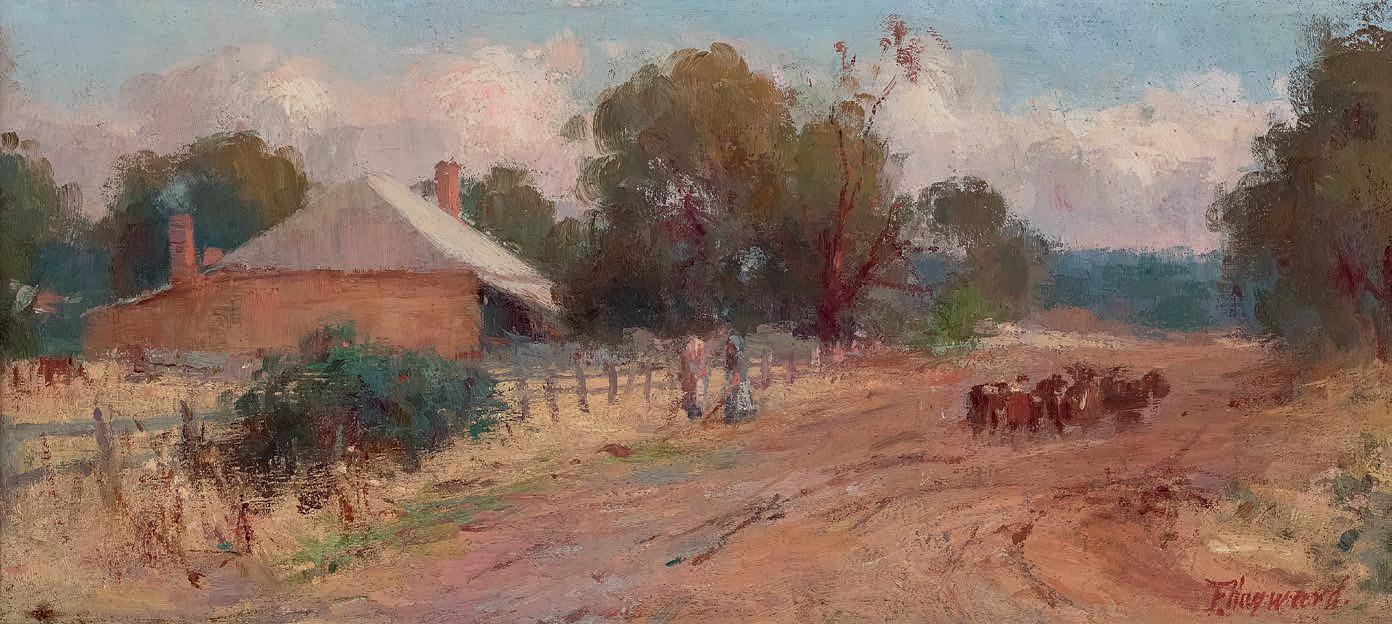
72
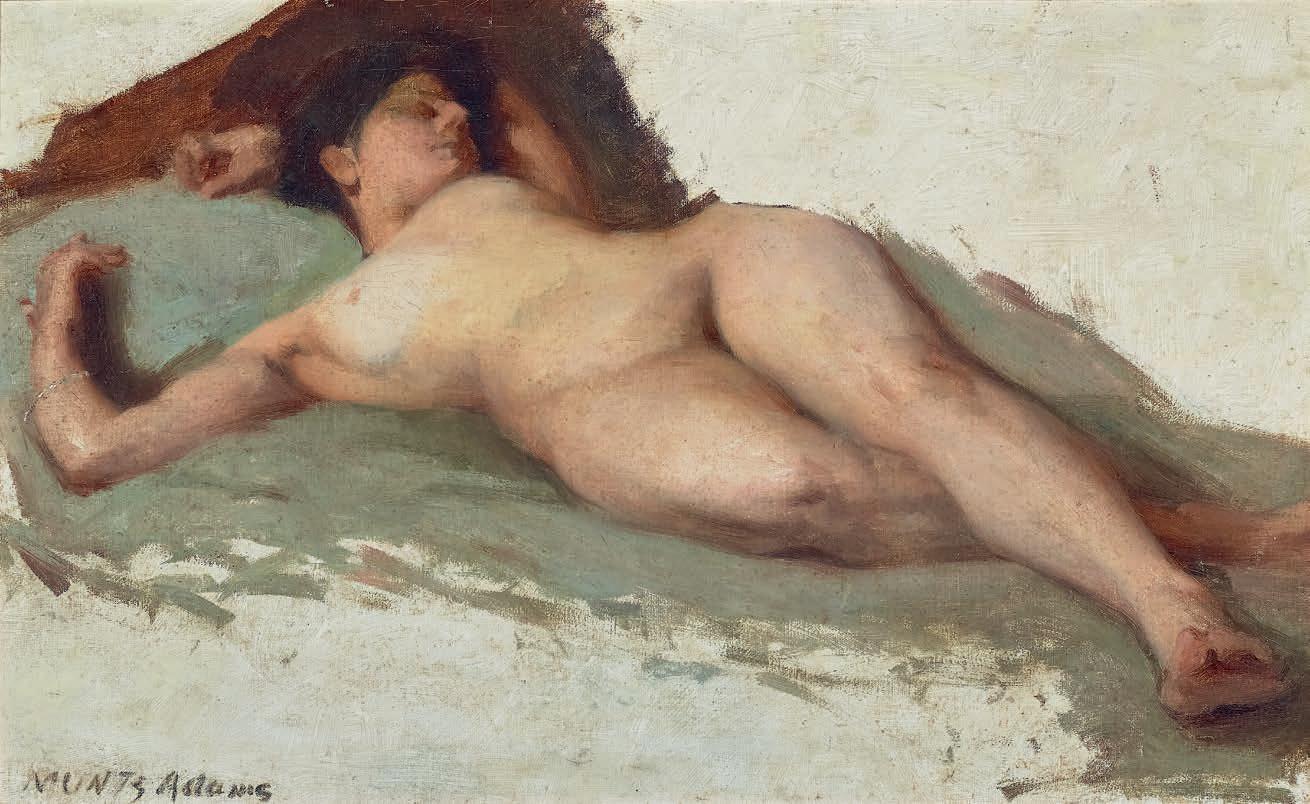
JOSEPHINE MUNTZ ADAMS
(1862 – 1949) RECLINING NUDE oil on canvas on composition board 39.5 x 61.5 cm signed lower left: MUNTZ Adams
ESTIMATE: $10,000 – 15,000
100
PROVENANCE
The estate of the artist, Melbourne Private collection, Melbourne Thence by descent Private collection, Melbourne Leonard Joel, Melbourne, 1 May 2001, lot 87 Private collection, Victoria
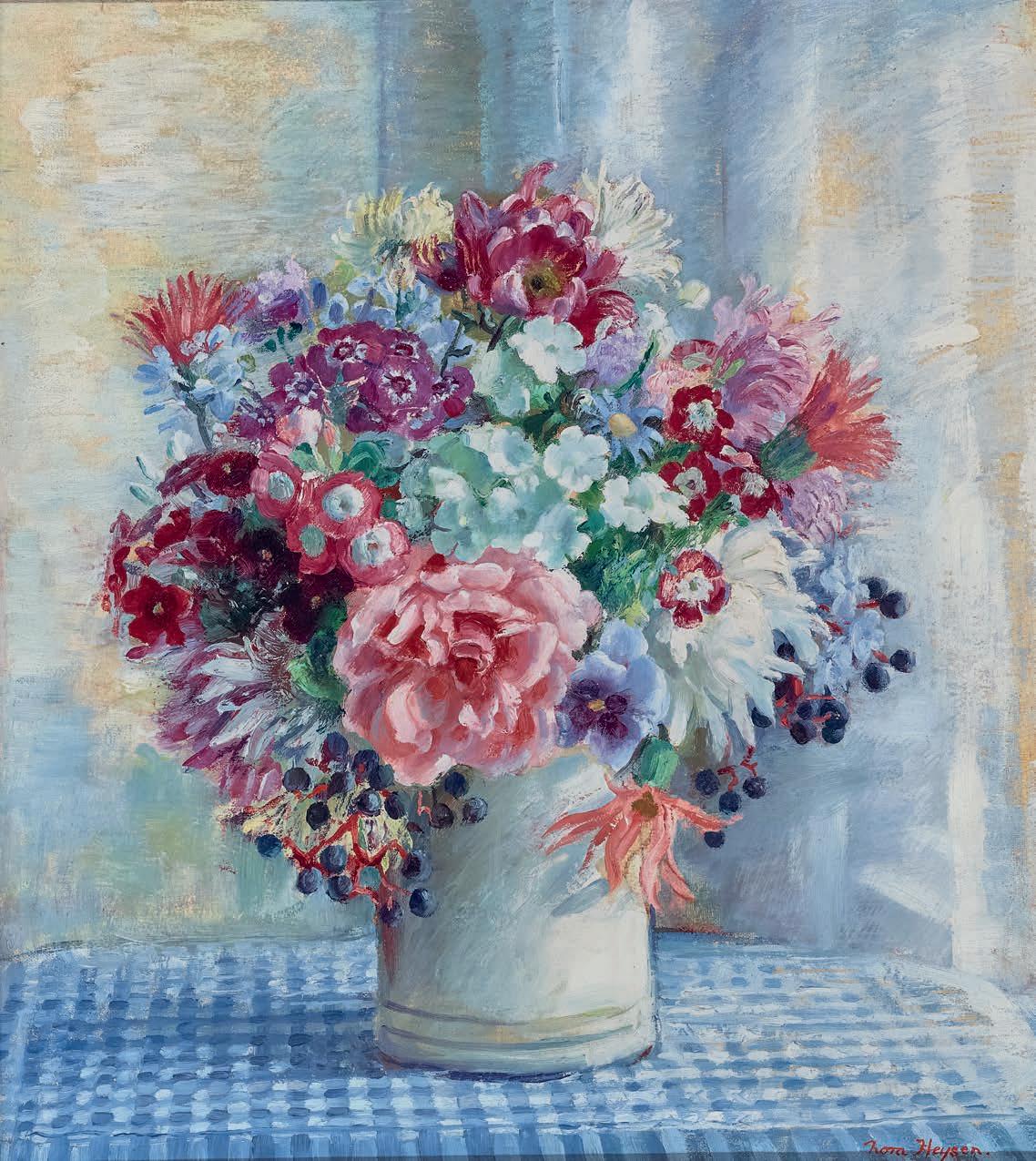
NORA HEYSEN
(1911 – 2003) VASE OF FLOWERS, c.1940s oil on canvas 45.0 x 40.0 cm signed lower right: Nora Heysen
ESTIMATE: $25,000 – 35,000
101
PROVENANCE
Artarmon Galleries, Sydney Private collection, New South Wales, acquired from the above in 1996
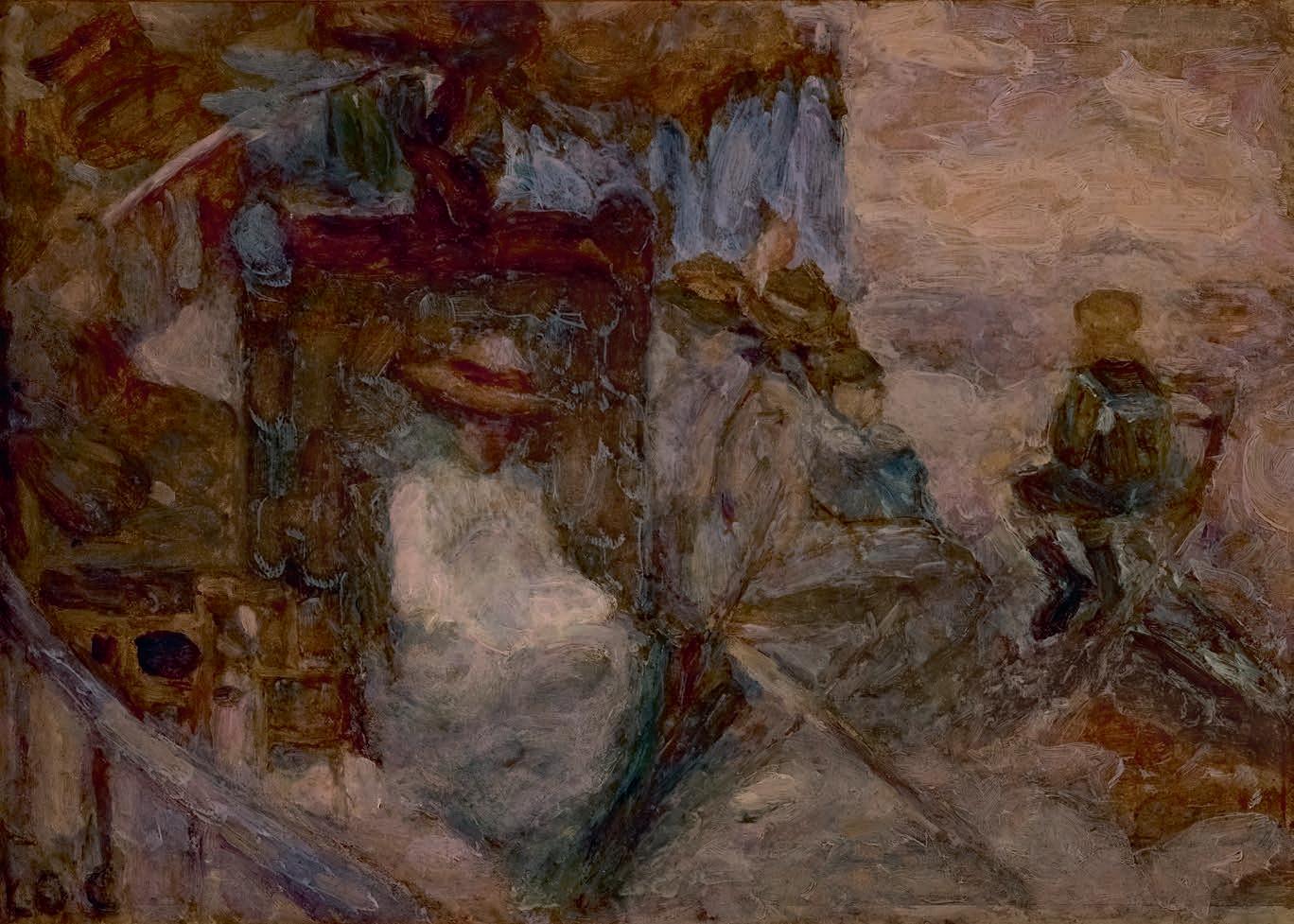
KATE O’CONNOR
(1876 – 1968, New Zealand/Australian) LUXEMBOURG GARDENS, PARIS, GIRL SKETCHING, c.1917 – 23 oil on board 42.5 x 59.5 cm signed with initials lower left: KOC signed (twice) verso: OConnor signed and inscribed on artist’s label verso: Luxemberg [sic] Gardens / Paris / Girl sketching / KLOConnor
ESTIMATE: $14,000 – 18,000
102
PROVENANCE
Mervyn Horton, Sydney (label attached verso) Private collection, Perth Sotheby’s, Sydney, 15 August 2000, lot 68 Private collection, Perth
LITERATURE
Harris, M., ‘Kate O’Connor’, Art and Australia, Ure Smith, Sydney, vol. 3, no. 4, March 1966, p. 271 (illus.)
RELATED WORKS
Woman in a Hat Sketching – Luxembourg Gardens, oil on board, 23.0 x 33.0 cm, illus. in Harris, M., ‘Kate O’Connor’, Art and Australia, Ure Smith, Sydney, vol. 3, no. 4, March 1966, p. 267
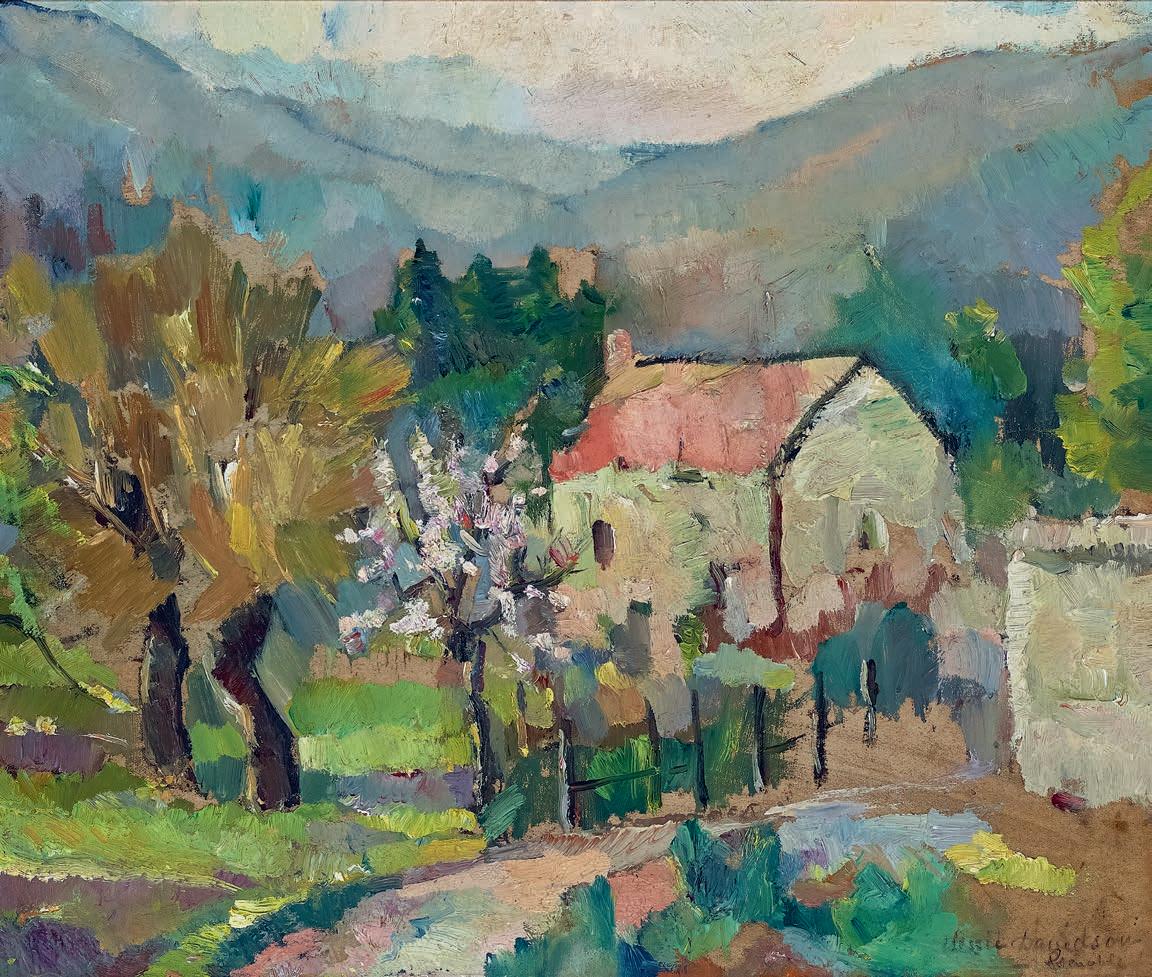
BESSIE DAVIDSON
(1879 – 1965) GRENOBLE, 1955 oil on board 34.5 x 41.0 cm signed and inscribed with title lower right: Bessie Davidson / Grenoble
ESTIMATE: $16,000 – 20,000
PROVENANCE
Collection of the artist, Adelaide Thence by descent Private collection, Adelaide Thence by descent Private collection, Adelaide
103
EXHIBITED
Bessie Davidson & Sally Smart – Two artists and the Parisian avant–garde, Bendigo Art Gallery, Victoria, 20 March – 26 July 2020
LITERATURE
Curtin, P., (ed.), Bessie Davidson: An Australian Impressionist in Paris, Bendigo Art Gallery, Victoria, 2020, pp. 62 (illus.), 64
RELATED WORK
Grenoble, 1943, oil on board, 17.0 x 23.0 cm, private collection, illus., in Curtin, P., (ed.), Bessie Davidson: An Australian Impressionist in Paris, Bendigo Art Gallery, Victoria, 2020, p. 59
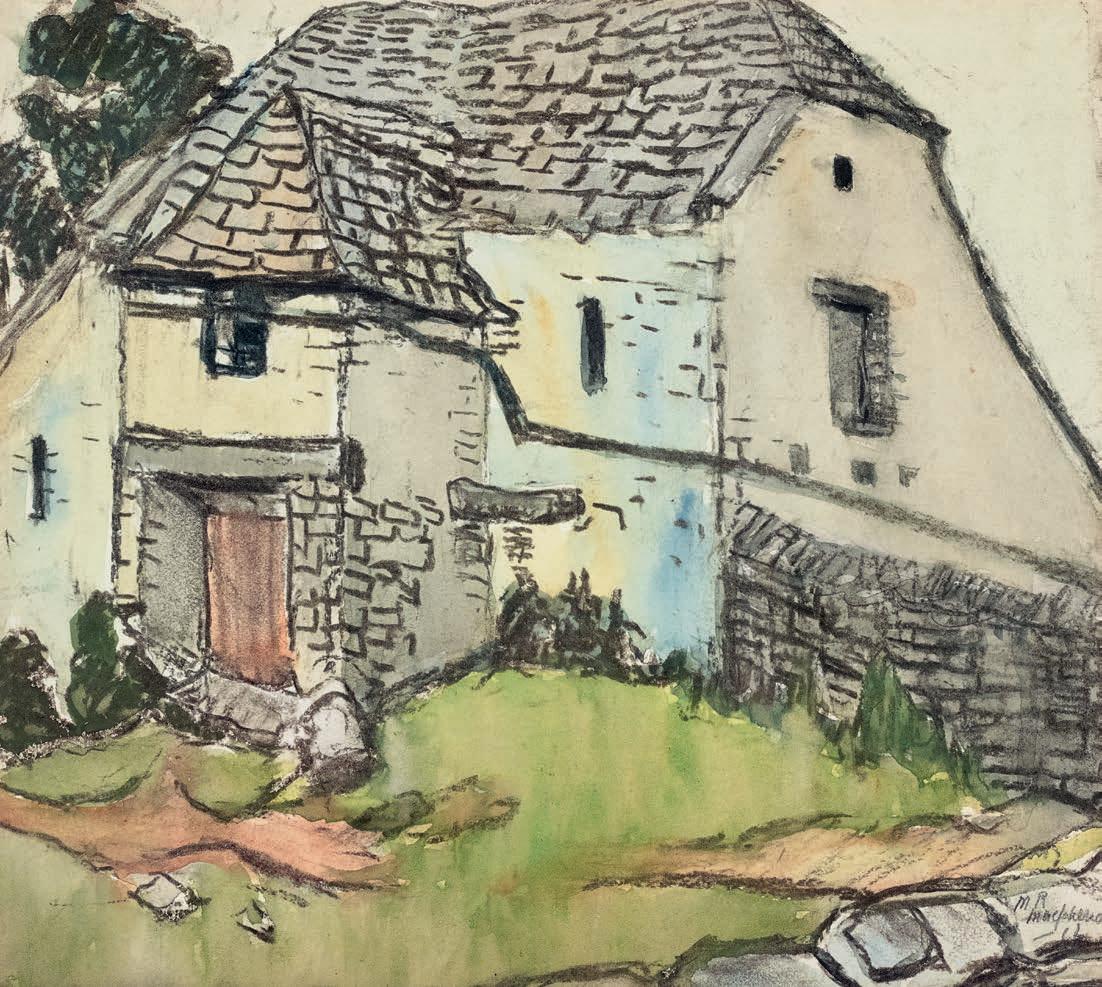
MARGARET PRESTON
(1875 – 1963) WEAVER’S COTTAGE, BILBURY, 1916 watercolour and charcoal on paper 26.5 x 29.5 cm signed and dated lower right: M R / Macpherson / — 16
ESTIMATE: $8,000 – 12,000
PROVENANCE
Private collection Leonard Joel, Melbourne, 12 April 1989, lot 1526 Private collection, Melbourne
EXHIBITED
Exhibition of Paintings, Prints and Pottery, Macpherson and Reynell, Preece’s Gallery, Adelaide, 15 – 30 September 1919, cat. 31
104
LITERATURE
Margaret Preston Catalogue Raisonné of paintings, monotypes and ceramics, Art Gallery of New South Wales, Sydney, 2005, CD-ROM compiled by Mimmocchi, D., with Edwards, D., and Peel, R.
RELATED WORK
Old House, c.1916, etching, 12.5 x 15.0 cm, in the collection of the National Gallery of Australia, Canberra Mill Pond, Bilbury, c.1916, etching, 22.5 x 15.0 cm, in the collection of the Art Gallery of New South Wales, Sydney
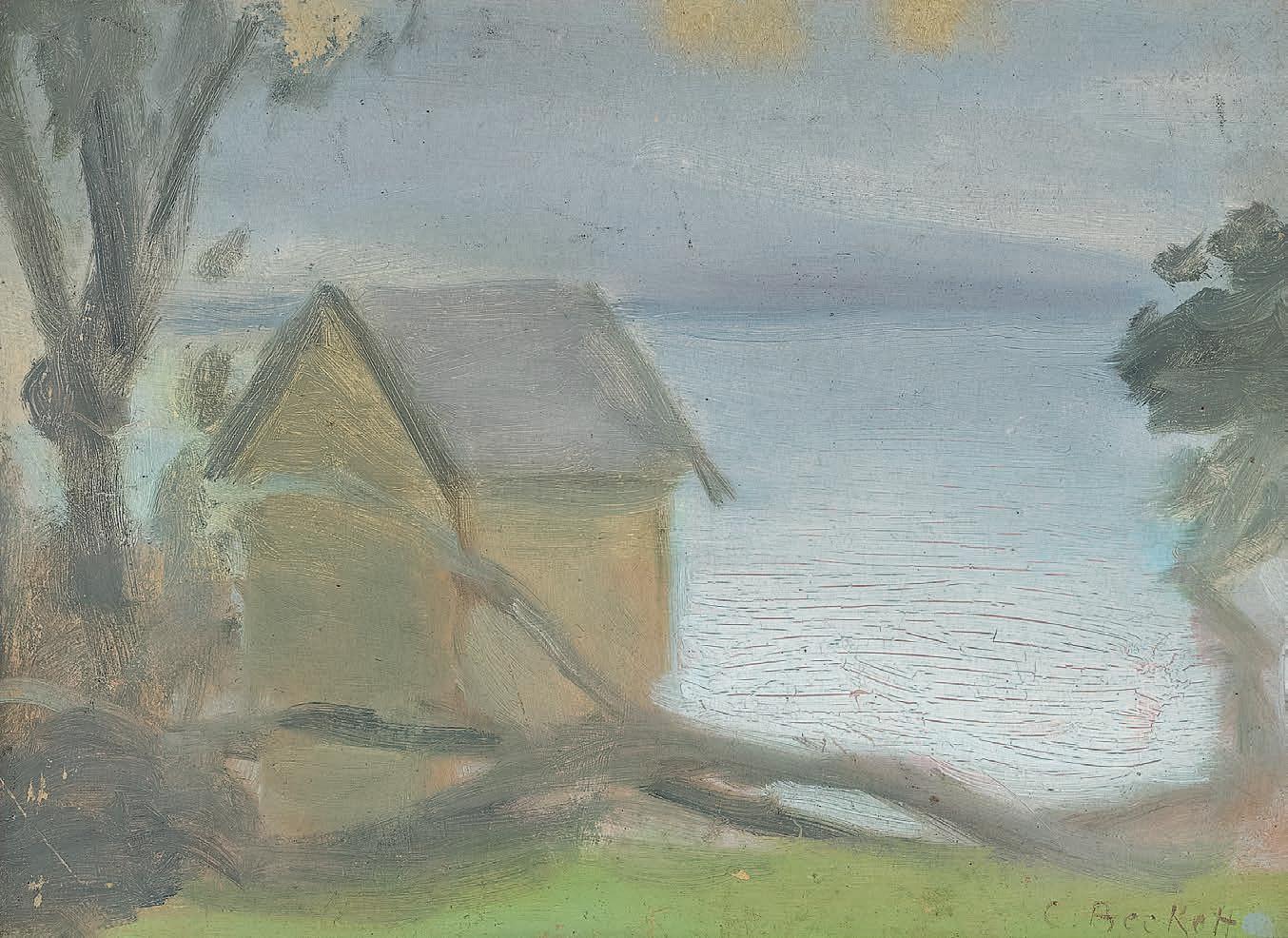
CLARICE BECKETT
(1887 – 1935) THE LITTLE BATHER oil on board 17.5 x 24.0 cm signed lower right: C. Beckett bears inscription on handwritten label attached verso: 24. The Little Bather
ESTIMATE: $20,000 – 30,000
105
PROVENANCE
Mrs Hilda Mangan, Melbourne Rosalind Humphries Galleries, Melbourne Ruth Prowse, Canberra Niagara Galleries, Melbourne (label attached verso) Private collection, Melbourne, acquired from the above in 2014
EXHIBITED
Ruth Prowse: Thirty Years of Collecting, ANU Drill Hall Gallery, Australian National University, Canberra, 1 April – 16 May 2004 (illus. in exhibition catalogue, p. 32) Clarice Beckett: A collector’s passion, The Ruth Prowse Collection, Mornington Peninsula Regional Gallery, Victoria, 12 July – 28 August 2005, cat. 15 (label attached verso) Clarice Beckett, Niagara Galleries, Melbourne, 29 April – 24 May 2014, cat. 18 (illus. in exhibition catalogue pp. 20, 21 (illus.), 45, 46)
We are grateful to Rosalind Hollinrake for her assistance with this catalogue entry.
(1875 – 1963) BEYOND BROKEN HILL NSW, 1946 colour monotype 28.5 x 32.5 cm (image) 30.5 x 34.0 cm (sheet) signed below image lower right: Margaret Preston inscribed with title below image lower left: Beyond Broken Hill NSW, monotype
ESTIMATE: $15,000 – 20,000
PROVENANCE
Private collection Bridget McDonnell Gallery, Melbourne (label attached verso) Private collection, Queensland
EXHIBITED
Australian Prints, Bridget McDonnell Gallery, Melbourne, 29 October – 22 November 1996, cat. 27
RELATED WORK
Stephen’s Creek, NSW, 1946, colour monotype, 38.0 x 35.0 cm (image), in the collection of the National Gallery of Australia, Canberra

(1950 – 2010, Japanese/Australian) LIDDED CONTAINER, 1993 heat blackened mild steel 32.0 x 60.0 x 20.0 cm
ESTIMATE: $10,000 – 15,000
PROVENANCE
Craft Victoria, Melbourne Private collection, Melbourne, acquired from the above in 1994
EXHIBITED
Reflection: Mari Funaki, Craft Victoria, Melbourne, 1994 (illus. in exhibition catalogue) Although only practising for a relatively short period, Mari Funaki left an indelible impact on Australia’s art world. Graduating from RMIT’s gold and silversmithing degree in 1993, she quickly established herself as a unique and important figure through her studio practice and eponymous gallery. She created a cohesive oeuvre of jewellery and objects that are ‘formidable in their complexity and vital charge’.1
Early work encompassed small steel boxes, sculptural candle holders and jewellery, with Mari’s first solo exhibition of ‘containers for candles’ at Melbourne’s famous Kuni’s restaurant in 1991 (where she also worked as a waitress). This early focus on vessels as a preferred form gave way in the late 1990s to jewellery, winning her the prestigious Herbert Hofmann Prize in Munich in 1996, and again in 1999. Mari returned to container-objects in the mid-2000s, with the final five years of her life seeing her most ambitious and celebrated works take shape.
Lidded Container, 1993 is a key early work and a clear forerunner to her later, more major sculptural works. One of the highlights from Mari’s first solo exhibition in a gallery, ‘Reflection’, 1994 held at Craft Victoria, it is instantly recognisable for its dynamic, expressive tension and its crisp articulation of form – her visual language here inspired, like much of her early work prior, by insects and plants. It is also one of the first pieces to use heat-blackened mild steel, a feature in all her non-jewellery objects after 2000 which she preferred for its thinness, strength and matte blackness.
Mari Funaki explained her fascination with containers in 2005: ‘Packaging is one of the most recognisable characteristics in Japanese culture. The box is not just to contain something, but to present something, to treat it with respect and add an air of anticipation. This sense of presentation is the way in which I see my container.’2
1. Devery, J., Mari Funaki: Objects, National Gallery of Victoria, Melbourne, 2010, p. 2 2. Mari Funaki, written statement for Object Gallery, 2005.
KATIE SCOTT, DIRECTOR, GALLERY FUNAKI, MELBOURNE
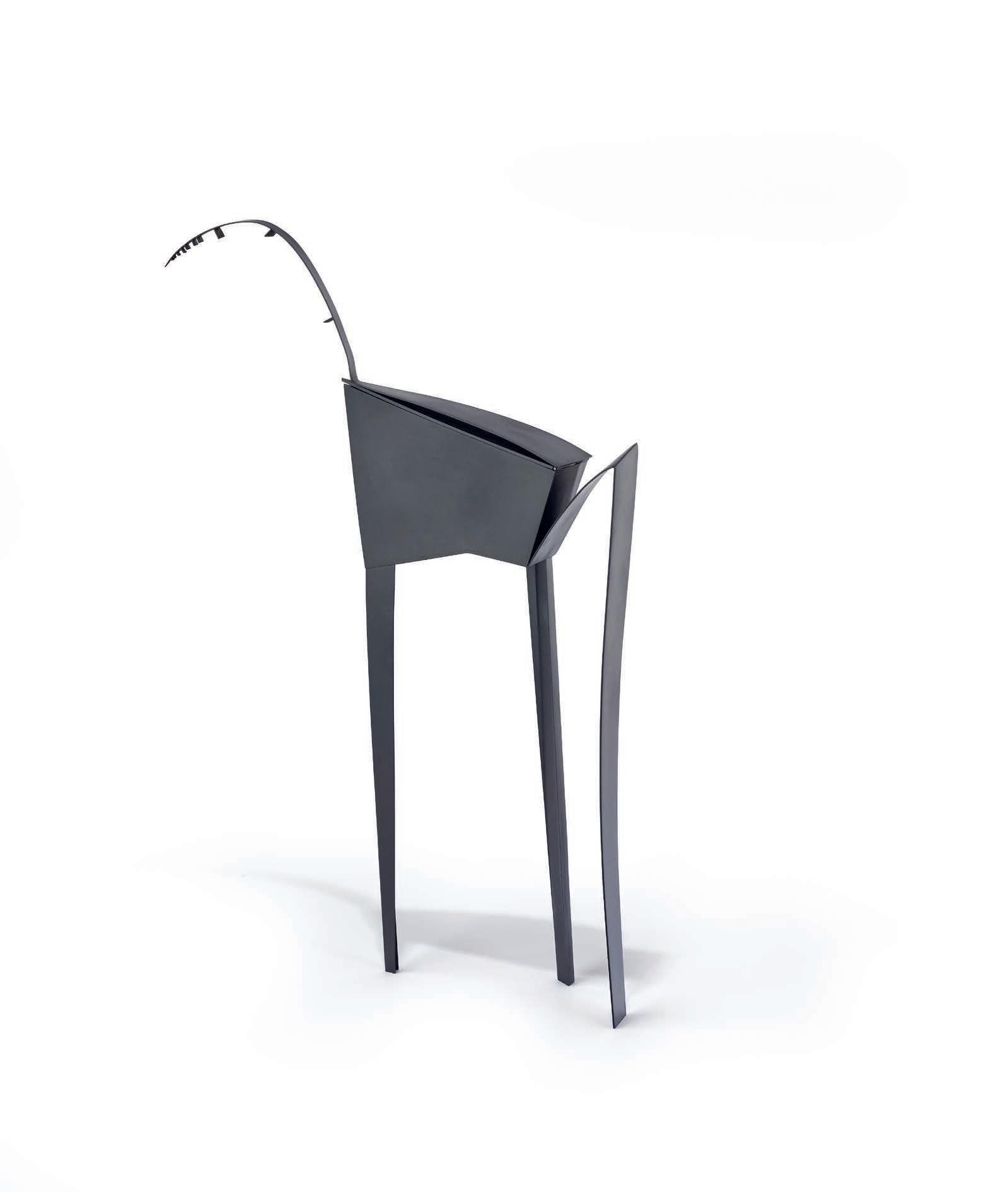
(1959 – 2006) SPIRAL II, 1988 Nos 5 & 6 from the SPIRAL II series of eight impressions emboss of copper sculpture on paper 65.0 x 50.0 cm (each sheet) each signed and numbered lower right: Bronwyn Oliver 5/8 and Bronwyn Oliver 6/8
ESTIMATE: $10,000 – 15,000 (2)
PROVENANCE
Estate of the artist, Sydney Company collection, Sydney
EXHIBITED
The Sculpture of Bronwyn Oliver, Tarrawarra Museum of Art, Healesville, Victoria, 19 November 2016 – 5 February 2017 (listed in exhibition catalogue)
LITERATURE
Fink, H., Bronwyn Oliver: Strange Things, Piper Press, Sydney, 2017, p. 218
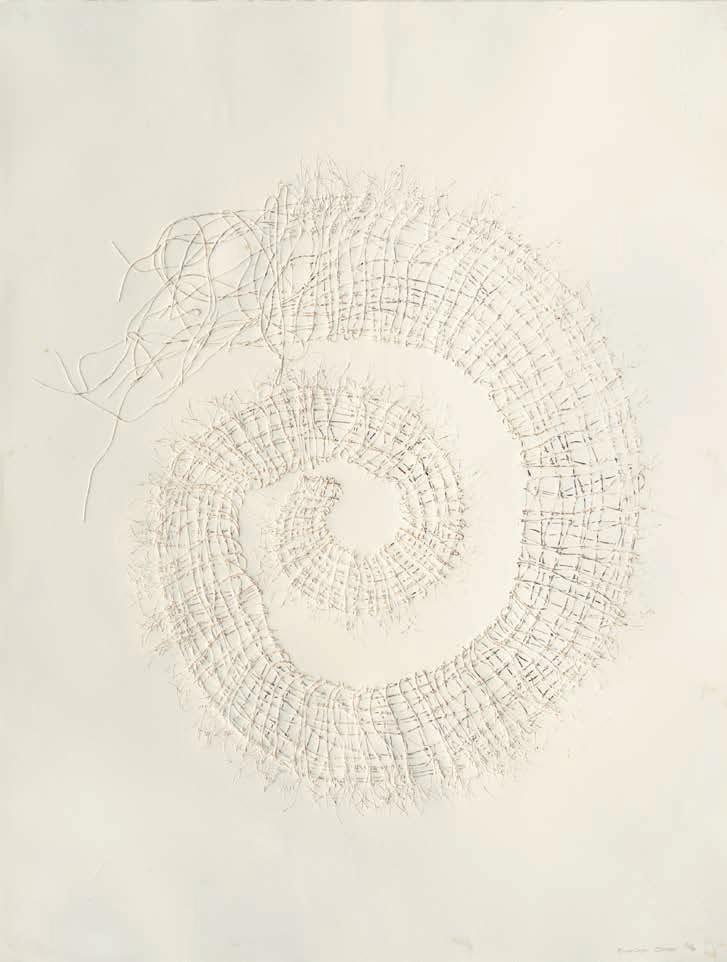
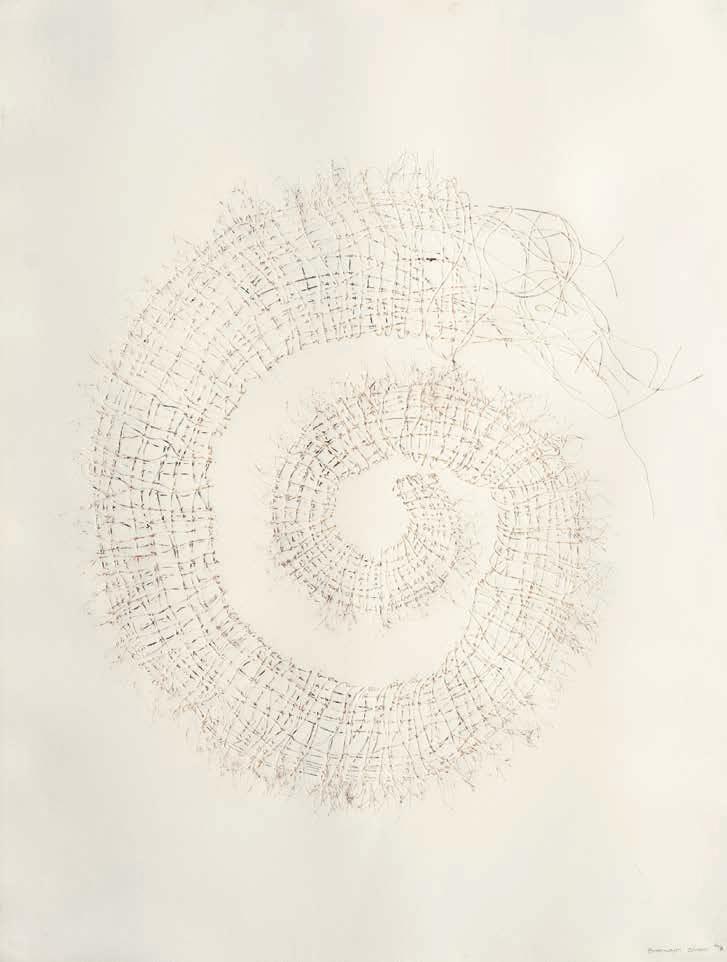
born 1934 ALONG THE TRACK, 1994 oil on canvas 84.0 x 91.5 cm signed lower right: Cummings signed, dated, and inscribed with title verso: Elisabeth Cummings / ‘Along the Track’ / 1994
ESTIMATE: $15,000 – 20,000
PROVENANCE
Hidden Valley Gallery, New South Wales Private collection, Sydney, acquired from the above in 1995
EXHIBITED
The Easter Show, Hidden Valley Gallery, New South Wales, 8 – 30 April 1995, cat. 12 Elisabeth Cummings Survey 1965 – 1995, Campbelltown City Bicentennial Art Gallery, Sydney, 2 August – 8 September 1996
Densely layered, chromatically and gesturally raucous, Cummings’ paintings are expressive responses to Sydney’s busy hinterland. Combining the grey-green tones so evocative of vegetation on the Australian East coast, with signature bold hues of yellow, red and purple, Cummings draws the viewer’s eyes on a journey through the picture plane, following the artist’s own steps through the painting’s eponymous track. Along the Track features the confident and considered gestures of a mature artist as she wrestles her way through the visual stimuli placed on picture plane and endowed with a life of its own.
A quiet and steady achiever in Australian art, Elisabeth Cummings has only recently started to receive the critical attention she has deserved over the last 60 years of untiring practice. A gestural and intuitive painter, Cummings has devoted most of her recent years to a semi-abstract style of landscape painting. Hitherto admired mostly by a select coterie of patrons and fellow artists, Cummings has recently been included in large survey exhibitions such as Destination Sydney in 2015, Know My Name at the National Gallery of Australia in 2021 and a second touring retrospective exhibition organized by Terence Maloon of the ANU Drill Hall gallery in 2017, Interior Landscapes. 1 In the 1970s, Cummings was a founding member of the artist community in Wedderburn, a semi-rural enclave south-west of Sydney, along with fellow artists John Peart, Roy Jackson and Joan Brassil. A strong environmentalist concern motivated this project, with the artists determined to protect the sandstone bushland around the Georges River from further development. Cummings however suffered a devastating loss when her new studio in Wedderburn was razed by a bushfire in September 1994. Along the Track was painted earlier that year, and by virtue of its inclusion in an Easter exhibition and swift acquisition by the current owner, escaped this destructive blaze.
Using the rugged landscape around her studio in Wedderburn as a point of departure, Along the Track becomes a painting about the act of painting rather of a subject, a call-and-response hierarchy within Cummings practice noted by John McDonald.2 A dialogue between shapes and colours animates both Cummings’ painting process and the viewer’s perception of the finished work. Alive with varied and competing gestures, the marks of Cummings’ hand are layered organically, through a process of placing, scraping back, rebuilding of the painted surface. The resulting grainy and chalky surface, with sinuous lines scratched into the fresh paint with the back of the paintbrush carries the weight of each iteration, its palimpsestic traces peeking through inconsistently throughout the plane. It is the richness of this mysterious alchemy that has endured within Cummings’ paintings and identified her as a unique and powerful voice in the history of Australian art.
1. Cummings’ first survey retrospective was held in 1996 at Campbelltown City Art Gallery, and included Along The Track 2. McDonald, J., ‘Elisabeth Cummings’, Sydney Morning Herald, Sydney, 10 June 2017
LUCIE REEVES-SMITH
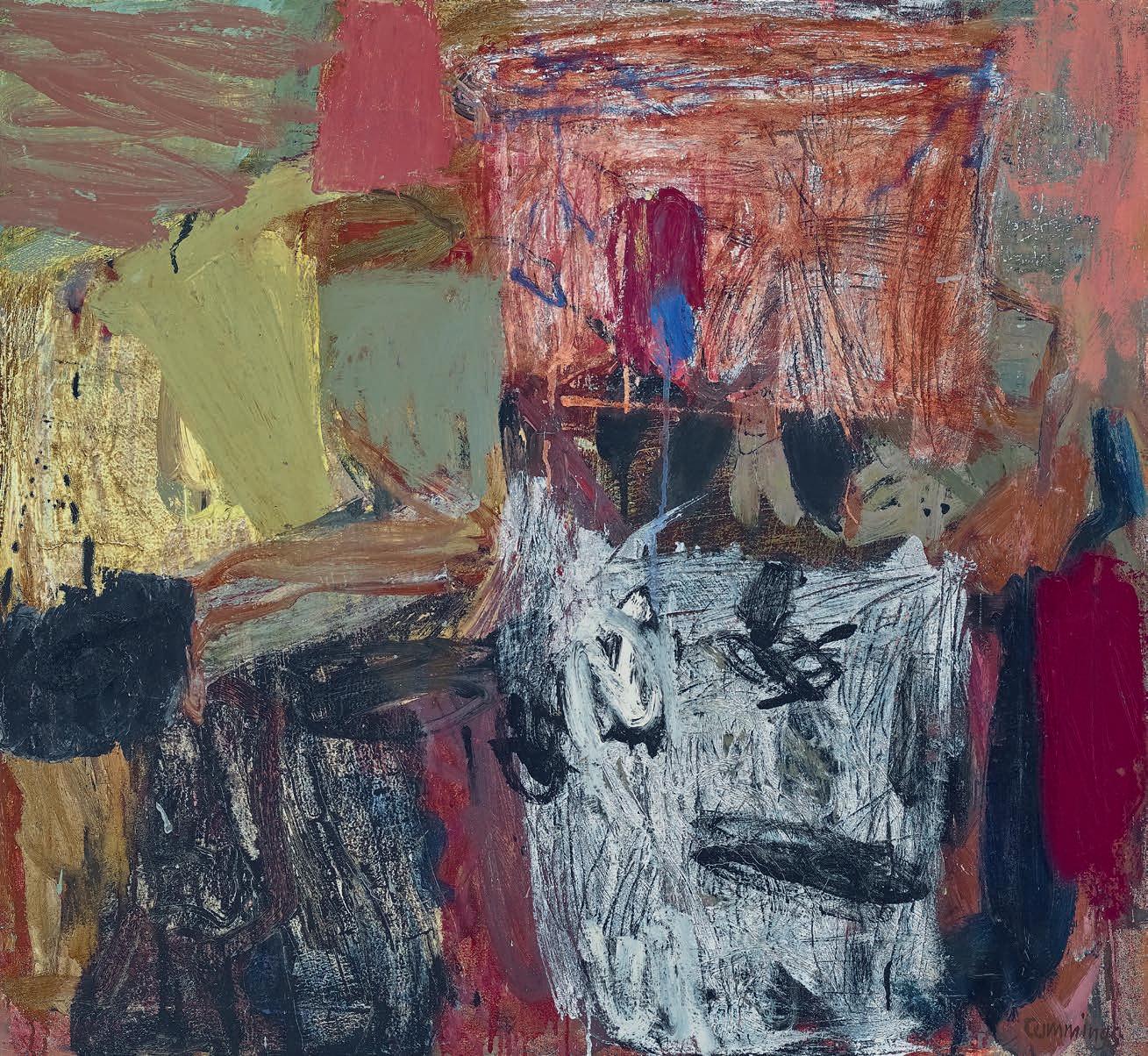
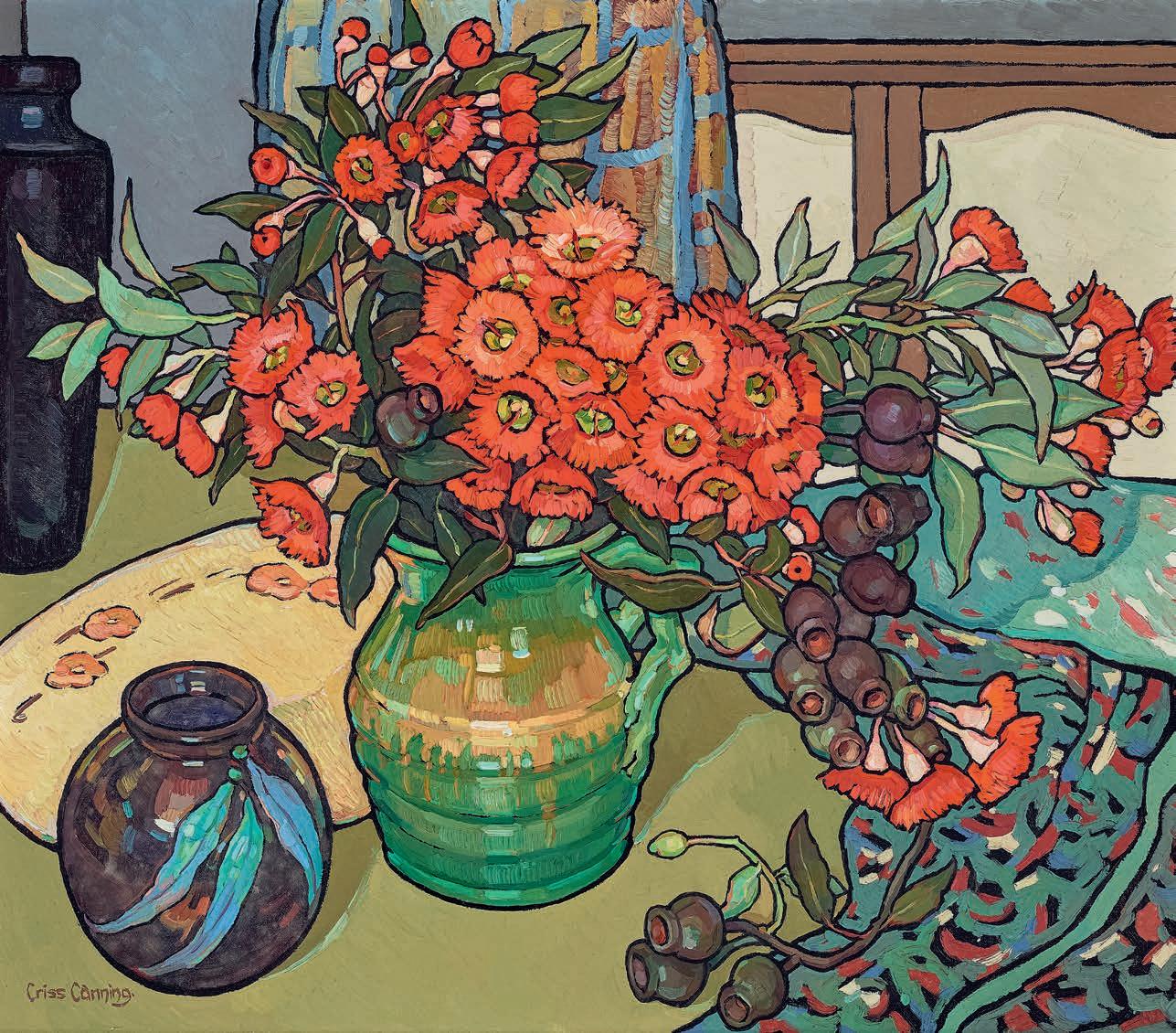
CRISS CANNING
born 1947 GUM BLOSSOM, 1990 oil on canvas 65.0 x 75.0 cm signed lower left: CRISS CANNING
ESTIMATE: $18,000 – 24,000
110
PROVENANCE
Trevor Bussell Fine Art Gallery, Sydney Private collection, New South Wales, acquired from the above in 1990
EXHIBITED
Australian Flower Paintings 1890 – 1990, Trevor Bussell Fine Art Gallery, Sydney, May 1990, cat. 7 (illus. in exhibition catalogue)









